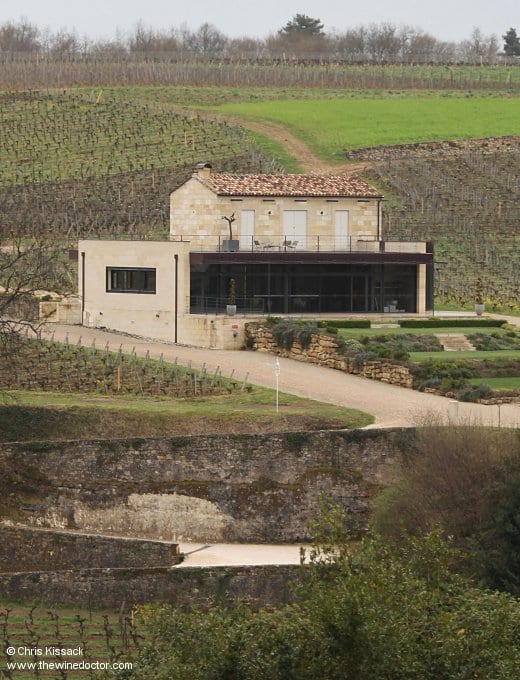Château Pavie-Macquin
While we perhaps tend to think of the Côte de Pavie as being the south-facing slope where only Château Pavie sits, this is undoubtedly a somewhat simplistic view. In fact the Pavie vineyards extend up and over this section of the plateau, which lies directly south-east of the town of St Emilion. At the very crest of the côte is Château Pavie-Decesse, which looks out over Château Pavie; it has only a few parcels of vines now, many of them having been absorbed into Château Pavie in 2002. Behind Château Pavie-Decesse are the vineyards of Château Pavie-Macquin, an estate blessed with a vineyard still of considerable size. The château itself is situated on the far side of this section of the plateau, looking north over the Vallon de Fongaban. Facing it, from the opposite side of this little valley, are Château La Clotte and Château La Serre. It’s not quite what you first think of when the words Côte de Pavie come to mind.
Despite this unusual north- and west-facing location, the vineyards mostly enjoy a good position on the plateau, contiguous with the other Pavie estates. As you would imagine all three domaines have a shared origin, to some extent, and as a consequence there is a certain degree of overlap and intertwining between the histories of these three châteaux as well as Château Larcis-Ducasse, which of course neighbours Château Pavie on the Côte de Pavie and also participates in this shared history. Rather than referring you to these other profiles for the early history of these domaines I have explored it in each profile in full, to save readers from having to flip between pages. If you are already familiar with the early story of the Pavie vineyards, and want to take up the story where Château Pavie-Macquin really takes independent form, with the arrival of Albert Macquin, turn to the next page of this profile.

